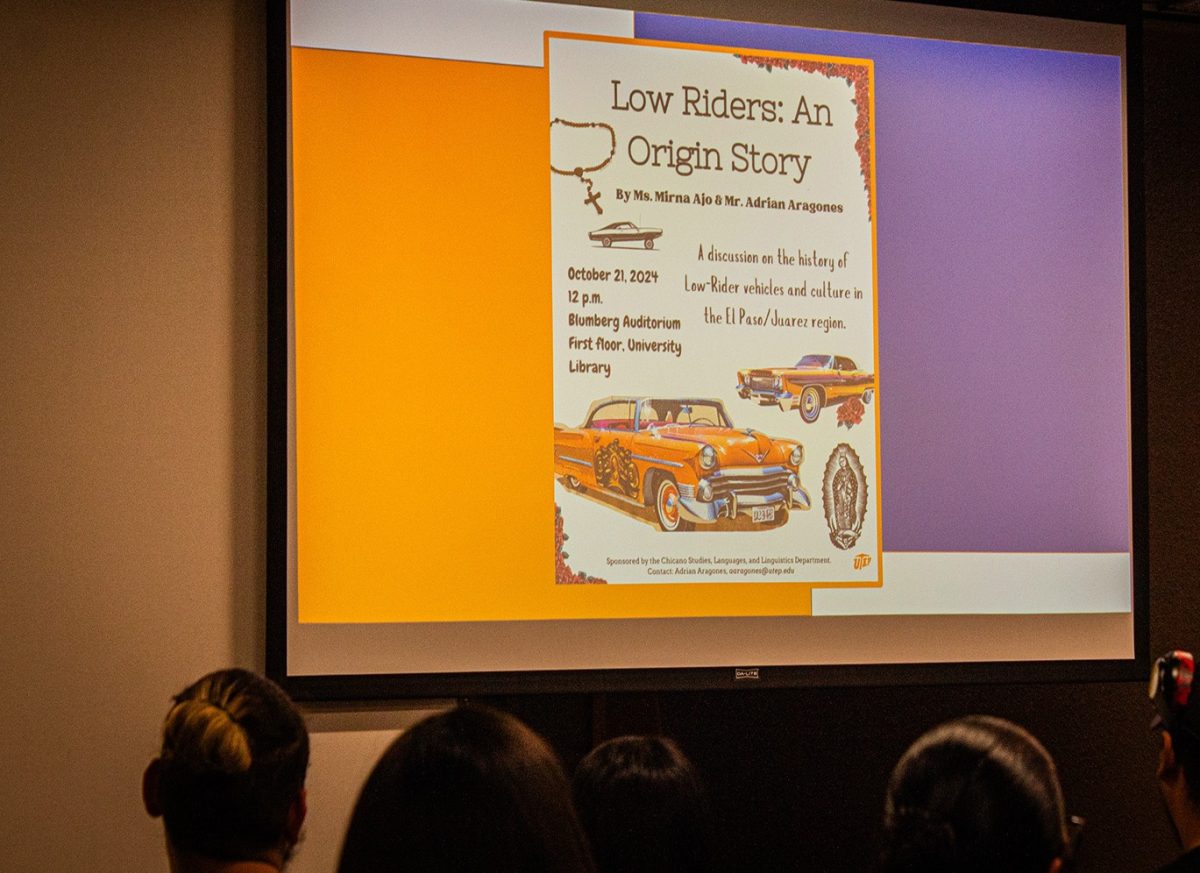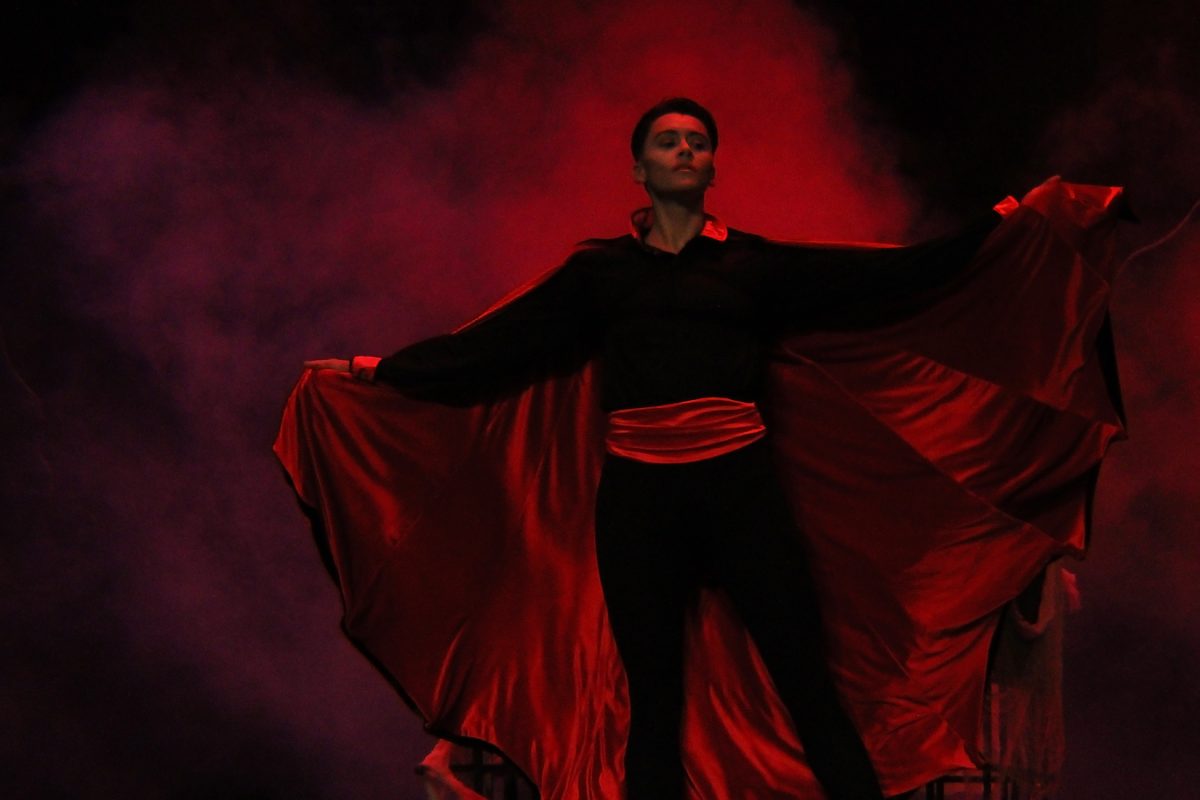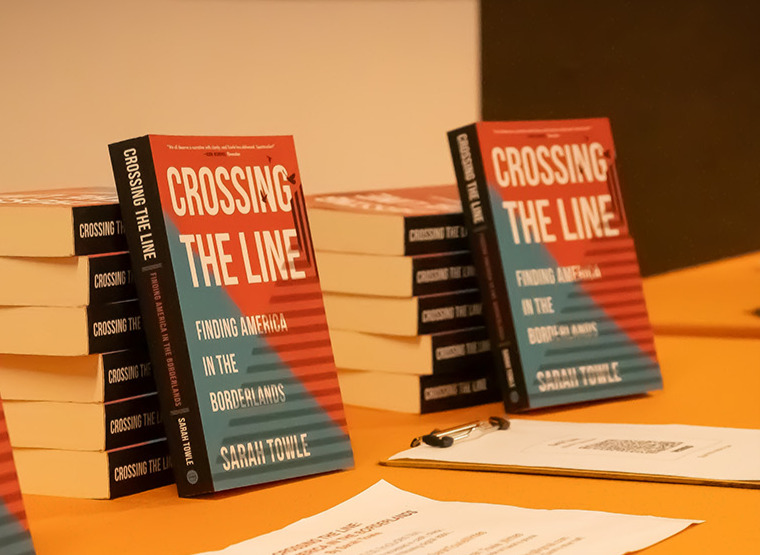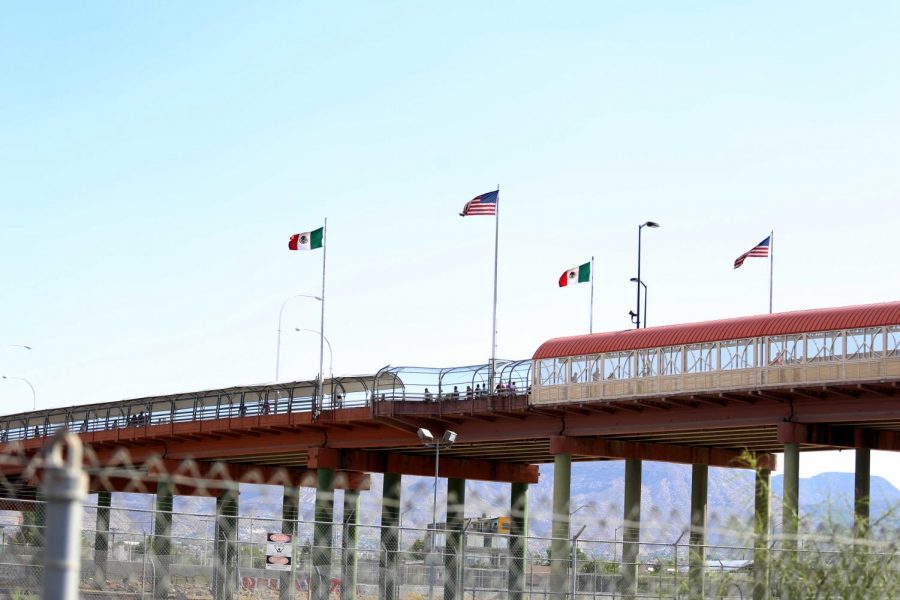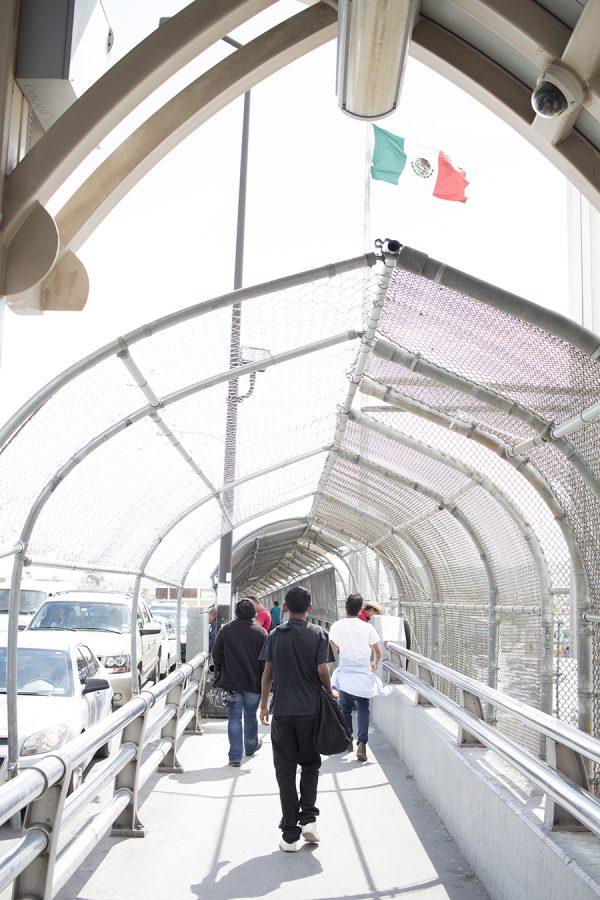From bright lights, multicolored wraps, to the hydraulics, the culture behind lowriders is significant in Chicano culture.
On Oct. 21, Adrian Aragones, UTEP assistant professor in the Chicano Studies Department and guest speaker Mirna Ajo from Universidad Autònome de Ciudad Juárez (Autonomous University of Ciudad Juárez) (UACJ) shared their insight about the history behind lowrider culture, pachuco(a) culture.
Ajo has done research on the history of women behind lowrider culture as part of her studies at UACJ.
In her research, “The Presence of women in the lowrider phenomenon, Ajo states, “The cars that fall within this tradition are from the year 1990 to previous decades, especially from the Chevrolet brand, with the Impala model as one of the favorites.
Since the first artisan modifications, in an activity known as “knocking down” the car, groups such as the “pachucos” have been involved in the exercise of this rolling tradition. Subsequently, in the context of civil rights, it was attributed to a group of young Chi-cano transgressors called “cholos”, who made the taste for these cars cross-border”
Ajo and Aragones gave a presentation to a group in the Blumberg auditorium.
“Lowrider culture is a living culture, and that’s why the showcases that they do are so important because it’s important for us to be aware that it is currently happening,” Ajo said. “It’s not like a mural, it’s not in the past it is happening right now.”
The importance of Cholo(a) culture lives on in the borderland. At Lincoln Park, Cholo(a) and lowrider culture is showcased throughout the murals and events throughout the park.
Avery Escamilla-Wendell is a contributor for The Prospector and may be reached at [email protected] or on Instagram @by_avery_escamilla.

